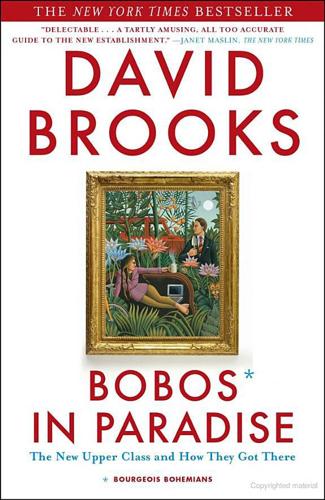
Bobos in Paradise: The New Upper Class and How They Got There
by
David Brooks
Published 1 Jan 2000
Bobos in Paradise The New Upper Class and How They Got There David Brooks SIMON & SCHUSTER PAPERBACKS NEW YORK LONDON TORONTO SYDNEY Preface This Simon & Schuster trade paperback edition 2004 Bobos in Paradise Praise for Bobos in Paradise “An absolute sparkler of a book, which should establish David Brooks—not that he needs establishing—as the smart, fun-to-read social critic of his generation.” —Christopher Buckley “In his briskly written, clever Bobos in Paradise, David Brooks astutely describes a new-ish American elite…. An enormously accomplished and perceptive reporter.”
…
The book is a pleasure, simultaneously bracing and comforting.” —Kurt Andersen, The New York Times Book Review “A breezy, well-argued explanation for why affluent, well-educated people crave sub-zero refrigerators. Clever observations … and gentle fun.” —Deirdre Donahue, USA Today “As both comedy and sociology, Bobos in Paradise succeeds nicely. A terrifically entertaining read, it is fundamentally correct in its premise.” —Alan Wolfe, The New Republic “Insightful and entertaining. The book abounds in perfectly rendered vignettes about the folkways of the educated class of the 1990s, a number of them laugh-out-loud funny.”
…
—Chris Waddington, Star Tribune (Minneapolis) “A thoroughly entertaining shellacking of our most upwardly mobile friends and neighbors.” —Arthur McMaster, The Tampa Tribune “Erudite and readable. Delivers densely packed cultural history and observation sprinkled with gut-busting passages. Brooks’s eye is superb.” —Frank Bentayou, The Plain Dealer (Cleveland) “I tried to resist Bobos in Paradise … but once I started, I was reading big chunks of it out loud to passersby.” —Marta Salij, Detroit Free Press TO JANE Simon & Schuster Paperbacks Rockefeller Center 1230 Avenue of the Americas New York, NY 10020 www.SimonandSchuster.com Copyright © 2000 by David Brooks All rights reserved, including the right of reproduction in whole or in part in any form.
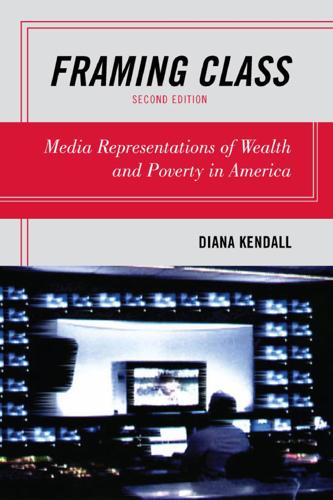
Framing Class: Media Representations of Wealth and Poverty in America
by
Diana Elizabeth Kendall
Published 27 Jul 2005
Gilbert, The American Class Structure in an Age of Growing Inequality. 10. Gilbert, The American Class Structure in an Age of Growing Inequality. 11. David Brooks, Bobos in Paradise: The New Upper Class and How They Got There (New York: Simon and Schuster, 2000). 12. E. J. Graff, “Bobos in Paradise: The New Upper Class and How They Got There,” American Prospect, May 22, 2000, 52, quoting Brooks, Bobos in Paradise. 13. Brooks, Bobos in Paradise, 52. 14. “It Would Never Work Out . . .” (cartoon), New Yorker, March 25, 2002, 75. 15. Benjamin DeMott, The Imperial Middle: Why Americans Can’t Think Straight about Class (New York: William Morrow, 1990); Gregory Mantsios, “Media Magic: Making Class Invisible,” in Privilege: A Reader, ed.
…
This category comprises semiskilled workers, many of whom are employed in factories or in the service sector (as clerks and sales associates, for instance), where their responsibilities involve routine, mechanized tasks requiring little skill beyond basic literacy and a brief period of on-the-job training.10 Members of the upper-middle class are often thought to have achieved the American Dream; unlike many in the upper class, however, most members of the upper-middle class must work for a living. Early in the twenty-first century, two best-selling books offered new concepts about the upper-middle class. In Bobos in Paradise, David Brooks suggests that many people in the upper-middle class are now “the new upper class,” a well-educated elite 9781442202238.print.indb 165 2/10/11 10:47 AM 166 Chapter 6 that he calls “Bobos” (bourgeois bohemians).11 Based in part on information in the New York Times wedding section about brides, grooms, and their families, Brooks argues that the “white-shoed, Whartonized, Episcopalian establishmentarians with protruding jaws” are long gone from the ranks of the privileged upper class, having been replaced by “mountaineering-booted overachievers with excellent orthodontia and impressive GRE scores.”12 However, Brooks’s description of the future prospects of the so-called Bobos gives them the appearance of being upper-middle class at best: But members of today’s educated class can never be secure about their own future.
…
EFFECTS OF MEDIA FRAMING ABOUT THE MIDDLE CLASS When I began my research into how the media frame news articles and television entertainment story lines about the middle class, I assumed that 9781442202238.print.indb 205 2/10/11 10:47 AM 206 Chapter 6 I would primarily find data to support a representation of the middle class as “us”—the vast category into which almost everyone in the United States supposedly fits. I also expected that the media would focus on positive attributes of the middle class, such as people’s values and lifestyles. Based on the popularity of books like Brooks’s Bobos in Paradise and Florida’s The Rise of the Creative Class, I anticipated depictions of the middle class as “in charge” and upwardly mobile. Instead, I found that although some journalists and television writers extol the virtues of this group, many others focus on the constant peril it faces, and they have done so for more than 150 years.
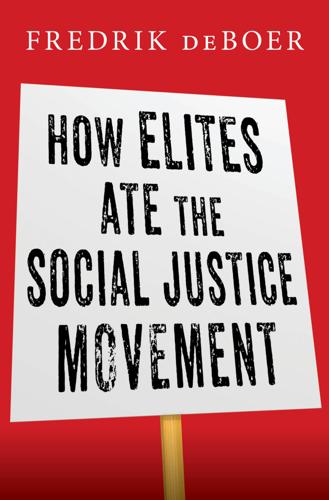
How Elites Ate the Social Justice Movement
by
Fredrik Deboer
Published 4 Sep 2023
“They turn nature into an achievement”: David Brooks, Bobos in Paradise: The New Upper Class and How They Got There (New York: Simon & Schuster, 2000), 212. “Locus of control, according to”: Richard B. Joelson, “Locus of Control,” Psychology Today, August 2, 2017, https://www.psychologytoday.com/us/blog/moments-matter/201708/locus-control. “There is a strain of discourse”: Clare Coffey, “Failure to Cope ‘Under Capitalism,’ ” Gawker, August 12, 2022, https://www.gawker.com/culture/failure-to-cope-under-capitalism. “It is still true that they”: David Brooks, The Paradise Suite: Bobos in Paradise and On Paradise Drive (New York: Simon & Schuster, 2011), ii.
…
A TAXONOMY OF THE CONTEMPORARY AMERICAN LIBERAL Perhaps a good place to start is a text from what I would consider the early days of what constitutes contemporary liberalism. David Brooks, the longtime New York Times columnist and many people’s platonic ideal of a centrist, wrote a turn-of-the-millennium-era book titled Bobos in Paradise. (“Turn of the millennium,” as in published on January 1, 2000.) The book meticulously chronicles the habits of the titular “bobos”—the bohemian bourgeois—who yearn to accumulate wealth like their forefathers, but insist on doing so in a more enlightened style. The bobo wants a nice house and expensive car, but they also want to save the planet and live a kind of subtle zen critique of the system.
…
During their adolescence they sweat—day and night—to get into the right college, take advantage of an unfathomable amount of classes and clubs and opportunities once there, then land jobs that will put them on the path to enviable upwardly mobile American lives—at which point they promptly discover disdain for the very system that they were so recently dedicated to. I doubt any individual of these programs and practices does a great deal to move the needle, but the aggregate influence of that many “good choices” on life outcomes may help explain intergenerational success. In the introduction to the 2011 edition of his book The Paradise Suite: Bobos in Paradise and On Paradise Drive, Brooks looked back and found that the bobos and their spiritual children were still possessed of an ethos of self-denial and, increasingly, a lack of comfort with their own financial comfort. “It is still true that they are ambivalent about their success,” wrote Brooks, “and they clothe their affluence in moral, organic, and environmental drapery.”
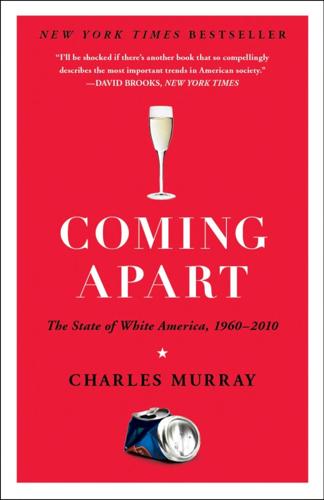
Coming Apart: The State of White America, 1960-2010
by
Charles Murray
Published 1 Jan 2012
Herrnstein and I discussed the driving forces behind this phenomenon, the increasing segregation of the American university system by cognitive ability and the increasing value of brainpower in the marketplace.2 We labeled the new class “the cognitive elite.” In 2000, David Brooks brought an anthropologist’s eye and a wickedly funny pen to his description of the new upper class in Bobos in Paradise. Bobos is short for “bourgeois bohemians.” Traditionally, Brooks wrote, it had been easy to distinguish the bourgeoisie from the bohemians. “The bourgeoisie were the square, practical ones. They defended tradition and middle-class values. They worked for corporations and went to church. Meanwhile, the bohemians were the free spirits who flouted convention.”
…
The latent propensity to create a different culture existed, but the intellectuals of Harvard Square didn’t have the critical mass to reshape the community in the ways that their tastes and preferences would reshape it when a critical mass materialized.7 The New-Upper-Class Culture Over the next few decades, they got that critical mass, and the result was becoming visible by the late 1980s, when thirtysomething began. By the end of the 1990s, the new culture had fully blossomed. Its mise-en-scène is captured in Bobos in Paradise by David Brooks’s description of the transformation of Wayne, Pennsylvania, where he had attended high school in the late 1970s. Wayne is one of Philadelphia’s famous Main Line communities. When Brooks had lived there, the business district had been an unremarkable place with a few restaurants with names like L’Auberge, a few tasteful clothing stores with names like the Paisley Shop, and a small assortment of pharmacies, grocery stores, and gas stations that tended to the day-to-day needs of the affluent residents of Wayne.
…
The best I can do is use the DDB Life Style data that were provided to Robert Putnam in the research for Bowling Alone and are now available to other scholars.11 That database does not permit us to isolate the top few centiles—the highest income code is $100,000—but it does give a quantitative measure of the relationship between income, education, and a wide variety of tastes and preferences. I also continue to draw heavily on the work of David Brooks and Richard Florida. Both Bobos in Paradise and The Rise of the Creative Class, along with their other books, have extensive documentation, some quantitative and some qualitative, for the generalizations they draw about the tastes and preferences of their Bobos and Creative Class, respectively, and my endnotes contain references to their discussions.
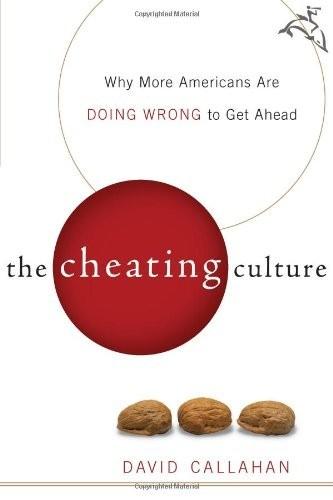
The Cheating Culture: Why More Americans Are Doing Wrong to Get Ahead
by
David Callahan
Published 1 Jan 2004
It was a movement, in fact, that drew much of its strength from an aggressive, proselytizing merchant class. Many other Americans with countercultural sympathies also decided that making money was what could really set them free to realize their individualism. As David Brooks has recounted in Bobos in Paradise, the '60s ultimately paved the way for a permanent cease-fire in the long war between bohemian and bourgeois value systems.14 The "yuppie" phenomenon underscored how easily '60s individualism morphed into '80s materialism. The yuppie officially appeared in March 1983, discovered by Chicago Tribune columnist Bob Greene in an article about Jerry Rubin, the former yippie turned Wall Street networker.
…
Christopher Lasch, The Culture of Narcissism: American Life in an Age of Diminishing Expectations (New York: W. W. Norton & Company, 1979). For an overview of the rise of the Christian right, see Steve Bruce, The Rise and Fall of the New Christian Right: Conservative Protestant Politics in America 1978–1988 (New York: Oxford University Press, 1990). [back] 14. David Brooks, Bobos in Paradise: The New Upper Class and How They Got There (New York: Simon & Schuster, 2000). [back] 15. Poll cited in Hendrik Hertzberg, "The Short Happy Life of the American Yuppie," in Nicolaus Mills, ed., Culture in an Age of Money: The Legacy of the 1980s in America (Chicago: Ivan R. Dee, 1990), 71.
…
Tim: on multilevel marketing by doctors, [>]–[>] BioLean: marketing of, [>]–[>] Blair, Jayson, [>], [>] fabricates news stories, [>]–[>], [>]–[>] Blakely, Edward & Mary Gail Snyder: Fortress America, [>] Blodget, Henry: conflicts of interest, [>] corrupt values of, [>]–[>], [>] escapes prosecution, [>] hypes InfoSpace stock, [>]–[>] Spitzer investigates, [>]–[>], [>]–[>] Blow, Richard, [>] Bobos in Paradise (Brooks), [>] Boesky, Ivan, [>]–[>] post-prison career, [>]–[>] SEC prosecutes, [>], [>] Bonds, Barry, [>]–[>], [>] accused of drug use, [>]–[>] Book of Virtues, The (Bennett), [>] Bork, Robert, [>], [>] Slouching Toward Gomorrah, [>]–[>] "bottom line": in medicine, [>]–[>] social values and the, [>]–[>], [>], [>], [>], [>], [>], [>], [>]–[>] Bowers, William: Student Dishonesty and Its Control in College, [>] Brady, Mick: on music piracy, [>] Branded (Quart), [>] BrandPartners, [>]–[>] Braunstein, Dr.

Age of the City: Why Our Future Will Be Won or Lost Together
by
Ian Goldin
and
Tom Lee-Devlin
Published 21 Jun 2023
As a result, inner cities developed a spirit of tolerance and openness that was conspicuously absent from suburbia. While the counterculture movement collapsed in the mid-1970s, and remained dormant through the heady days of the neoliberal revolution of Reagan and Thatcher, its spirit resurfaced in a curious way in the twilight of the twentieth century. In his insightful and entertaining 2000 book Bobos in Paradise, New York Times journalist David Brooks coined the term ‘bobo’ – or bourgeois bohemian – to describe an emerging breed of educated elite that blended the aesthetic of the counterculture with the economic advantages bestowed on them by the transition to a knowledge economy. This is the type of person for whom it would seem vulgar to spend $15,000 on a home cinema, but perfectly natural to spend the same amount on a rustic-looking kitchen.28 Today you might identify bobos by an integrated suite of Apple products or an Instagram feed full of pictures of yoga retreats in hard-to-reach places.
…
(eds), Imagining the Future City: London 2062 (Ubiquity Press). 15 de Vise, P., 1976, ‘The suburbanization of jobs and minority employment’, Economic Geography, Vol. 52, No. 4. 16 Hobbs, F. and Stoops, N., 2002, ‘Demographic trends in the 20th century’, US Census Bureau (census.gov). 17 Cited in Wilkerson, I., 2016, ‘The long-lasting legacy of the Great Migration’, Smithsonian Magazine. 18 Wilson, W., 1987, The Truly Disadvantaged (University of Chicago Press). 19 Rajan, R., 2019, The Third Pillar (William Collins). 20 Hannah-Jones, N., 2019, ‘It was never about busing’, New York Times. 21 Clark, W., ‘School desegregation and white flight: a re-examination and case study’, Social Science Research, Vol. 16, No. 3. 22 Rhodes, J. and Brown, L., 2019, ‘The rise and fall of the “inner city”: race, space, and urban policy in postwar England’, Journal of Ethnic and Migration Studies, Vol. 45, No. 17. 23 Ehrenhalt, A., 2013, The Great Inversion (Vintage). 24 Edlund, L., et al., ‘Gentrification and the rising returns to skill’, NBER working paper. 25 Authors’ calculations based on Zillow data and US Census population weightings. 26 Autor, D., et al., 2017, ‘Gentrification and the amenity value of crime reductions’, NBER working paper. 27 Gropius, W., 1969, ‘Principles of Bauhaus production’, in Wingler, H. (ed.), The Bauhaus (MIT Press), pp. 109–10. 28 Brooks, D., 2000, Bobos in Paradise (Simon & Schuster). 29 Glass, R., 1964, London: Aspects of Change (MacGibbon & Kee), p. xix. 30 Easterly, W., et al., 2016, ‘A long history of a short block: four centuries of development surprises on a single stretch of a New York city street’ (greenestreet.nyc/paper). 31 Authors’ calculations based on ONS data. 32 Ibid. 33 Clark, D., 2022, ‘Average age of mothers at childbirth in the United Kingdom from 1938 to 2020’, Statista (statista.com). 34 Dougherty, C. and Burton, A., 2017, ‘A 2:15 alarm, 2 trains and a bus get her to work by 7 a.m.’, New York Times. 35 Jeunesse, E., 2017, ‘The rise of poverty in suburban and outlying areas’, Joint Center for Housing Studies (jchs.harvard.edu). 36 White, G., 2015, ‘Long commutes are awful, especially for the poor’, The Atlantic. 37 Samans, R., et al., 2015, ‘Inclusive growth and development report 2015’, World Economic Forum (weforum.org). 38 McFarland, J., et al., 2018, ‘The condition of education 2018’, National Centre for Education Statistics (nces.ed.gov). 39 Semuels, A., 2017, ‘Japan might be what equality in education looks like’, The Atlantic. 40 Ibid. 41 Fryer, R., 2017, ‘Management and student achievement: evidence from a randomized field experiment’, NBER working paper. 42 Weale, S., 2021, ‘Headteachers call for reform of school admissions to redress attainment gap’, Guardian. 43 Shelter, 2022, ‘The story of social housing’ (england.shelter.org.uk). 44 Jacobs, J., 1961, The Death and Life of Great American Cities (reprint by Vintage, 1993). 45 The Economist, 2020, ‘Governments are rethinking the provision of public housing’. 46 Shelter, 2022, ‘Social housing deficit’ (england.shelter.org.uk). 47 Ball, J., 2019, ‘Housing as a basic human right’, The New Statesman. 48 Authors’ calculations based on ONS data. 49 Bonnet, F., 2014, ‘Social housing in New York’, Metropolitics (metropolitics.org). 50 The Economist, 2020, ‘Governments are rethinking the provision of public housing’. 51 Kober, E., 2020, ‘New York City records another year of jobs–housing mismatch’, Manhattan Institute (economics21.org). 52 The Guardian Data Blog, 2016, ‘Deprivation and poverty in London’, Guardian. 53 Stoll, B., et al., 2022, ‘Benchmarking European cities on creating the right conditions for zero-emission mobility’, Clean Cities Campaign (cleancitiescampaign.org). 54 Transport for London, 2022, ‘Fares from 1 March 2022’ (tfl.gov.uk). 55 RATP, 2022, ‘Tickets and fares’ (ratp.fr).
…
Bor, A. and Bang Petersen, M., 2021, ‘The psychology of online political hostility: a comprehensive, cross-national test of the mismatch hypothesis’, American Political Sciences Review, Vol. 116, No. 1. Boustan, L., et al., 2013, ‘Urbanization in the United States, 1800–2000’, NBER working paper. Bray, R., 2020, Armies of Pestilence: The Impact of Pandemics on History (Lutterworth Press). Brooks, D., 2000, Bobos in Paradise (Simon & Schuster). Broom, D., 2021, ‘Home or office? Survey shows opinions about work after COVID-19’, World Economic Forum (weforum.org). C40 Cities, 2018, ‘The Future We Don’t Want’ (c40.org). Cadman, E., 2021, ‘Your new office set-up is going to look a lot like the old one’, Bloomberg News.
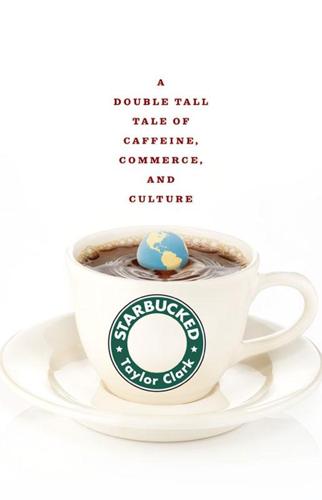
Starbucked: A Double Tall Tale of Caffeine, Commerce, and Culture
by
Taylor Clark
Published 5 Nov 2007
Plus, only goods that enhance productivity could curry favor under the new social regime; alcohol and tobacco were increasingly being seen as health-wrecking evils. “Smoking is now considered a worse sin than at least five of the ten commandments,” the New York Times columnist David Brooks explains in his book Bobos in Paradise. “Coffee becomes the beverage of the age because it stimulates mental acuity, while booze is out of favor because it dulls the judgment.” The coffee-house offered an antidote to these social deficiencies: a place to just hang out. As a comfortable and safe community nexus, free of drunks and secondhand smoke, the café eased the problem of disconnection while offering an item that people could come in for every day; it became America’s version of the British pub.
…
My discussion of recent U.S. social trends and the changing American consumer owes much to Michael Silverstein and Neil Fiske, Trading Up: The New American Luxury (New York: Portfolio, 2003); John de Graaf, David Wann, and Thomas H. Naylor, Affluenza: The All-Consuming Epidemic (San Francisco: Berrett-Koehler, 2005); Robert D. Putnam, Bowling Alone: The Collapse and Revival of American Community (New York: Simon & Schuster, 2000); David Brooks, Bobos in Paradise: The New Upper Class and How They Got There (New York: Simon & Schuster, 2000); Juliet B. Schor, The Overspent American: Why We Want What We Don’t Need (New York: HarperPerennial, 1998); and Ray Oldenburg, The Great Good Place: Cafés, Coffee Shops, Bookstores, Bars, Hair Salons, and Other Hangouts at the Heart of a Community (New York: Marlowe, 1999).
…
For more on Starbucks’s marketing and the story of the “Big Dig,” see Scott Bedbury and Stephen Fenichell, A New Brand World: 8 Principles for Achieving Brand Leadership in the 21st Century (New York: Viking, 2002); and Kim Murphy, “More Than Coffee, a Way of Life,” Los Angeles Times, September 22, 1996. Page 92. The story of Starbucks hypnotizing “hip young people” comes from Ruth Shalit, “Hypnotizing Slackers for Starbucks, and Other Visionary Acts of Marketing Research,” Salon.com, September 28, 1999. Page 93. Naomi Klein, No Logo (New York: Picador, 2002). David Brooks, Bobos in Paradise: The New Upper Class and How They Got There (New York: Simon & Schuster, 2000). Page 94. Howard Schultz and Dori Jones Yang, Pour Your Heart into It: How Starbucks Built a Company One Cup at a Time (New York: Hyperion, 1997). Page 96. David Shields, “The Capitalist Communitarian,” New York Times Magazine, March 24, 2002.
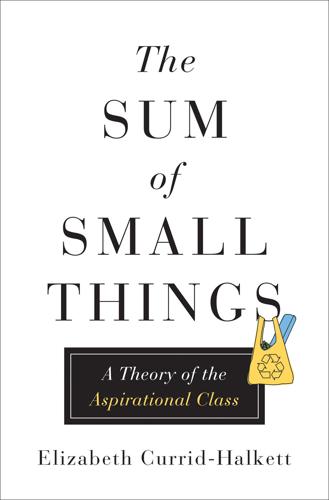
The Sum of Small Things: A Theory of the Aspirational Class
by
Elizabeth Currid-Halkett
Published 14 May 2017
In short, unlike Veblen’s leisure class or David Brooks’s “bobos,” this new elite is not defined by economics. Rather, the aspirational class is formed through a collective consciousness upheld by specific values and acquired knowledge and the rarified social and cultural processes necessary to acquire them. In Bobos in Paradise, David Brooks chronicled the cognitive dissonance of “bobos” (bohemian bourgeois) who grew up in the counterculture 1960s and felt a deep discomfort around their adulthood wealth. This group is also an economically based elite, or what Brooks called “the new upper class.” The uneasiness many bobos felt in reconciling their hippy, nonmaterialistic earlier years and their newfound wealth resulted in consumer habits that were still expensive but ultimately attempted to distance themselves from money.
…
Consider that even the wealthiest aspirational class kitchens often decorate with copper pots, rustic Stickley dining tables, and Aga-like stoves that resemble the stoves used in the kitchen of Downton Abbey, rather than the upstairs formal baroque style of English aristocrats. Casualness in all facets of life has become a part of aspirational class habitus. In this respect, the aesthetics of the aspirational class are in line with those of bobos. As David Brooks writes in his book Bobos in Paradise, “Educated elites are expected to spend huge amounts of money on things that used to be cheap … We prefer to buy the same items as the proletariat—it’s just that we buy rarefied versions of these items that members of the working class would consider preposterous. So we will buy chicken legs, just like everyone else, but they’ll likely be free-range … we’ll buy potatoes, but we won’t buy an Idaho spud.
…
Distinction: A social critique of the judgment of taste. Cambridge, MA: Harvard University Press. Bremmer, I. (2016). These five facts explain the unstable global middle class. Time Magazine, January 29. Retrieved from http://time.com/4198164/these-5-facts-explain-the-unstable-global-middle-class/. Brooks, D. (2000). Bobos in paradise: The new upper class and how they got there. New York: Simon & Schuster. ———. (2013). The humanist vocation. New York Times, June 13. Browne, A. (2014, August 15). The great Chinese exodus. Wall Street Journal. Retrieved from http://online.wsj.com/articles/the-great-chinese-exodus-1408120906?

Consumed: How Markets Corrupt Children, Infantilize Adults, and Swallow Citizens Whole
by
Benjamin R. Barber
Published 1 Jan 2007
Naomi Klein, No Logo: Taking Aim at the Brand Bullies (New York: Picador, 2000), p. 120. 11. Shawn Carkonen, Amazon editorial review of David Brooks, Bobos in Paradise: The New Upper Class and How They Got There (New York: Simon & Schuster, 2000), posted at www.amazon.com. Brooks sums up the bobo category, an offspring of the Information Age, by arguing that “dumb good-looking people with great parents have been displaced by smart, ambitious, educated, and antiestablishment people with scuffed shoes” (Bobos in Paradise, p. 39). 12. Product placement of commercial goods in films is today the preferred method of advertising, allowing products to be inserted into and identified with the “real life” of Hollywood’s reality cinema.
…
And bobos, the coinage of journalist David Brooks (self-described as a “comic sociologist, but now an editorial page columnist for the New York Times”), fastens onto the “bourgeois bohemians” who manage to blend the hippie counterculture of the 1960s with the hardworking, meritocratic mainstream culture of the 1990s. Bobos are found in all developed commercial societies, from London’s Sloane Square to Paris’s rive gauche American-style malls, mimicking the great Mall of America in the Twin Cities suburb of Bloomington, Minnesota. Amazon’s review of Brooks’s book Bobos in Paradise paraphrases him by depicting bobos as consumers who “sip double-tall, nonfat lattes, chat on cell phones, and listen to NPR while driving their immaculate SUVs to Pottery Barn to shop for $48 titanium spatulas. They tread down specialty cheese aisles in top-of-the-line hiking boots and think nothing of laying down $5 for an olive-wheatgrass muffin.”11 This pop-cultural characterization of identity is as laden with product placements as the latest Hollywood blockbuster, and its primary markers are consumables.12 It is as if the character of the age of Enlightenment were to be identified by the wines served to Voltaire rather than by Candide, or the meaning of Romanticism captured by Coleridge’s favorite pipe tobacco rather than his heroic poetry.
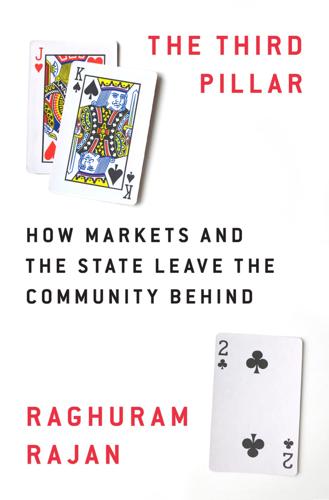
The Third Pillar: How Markets and the State Leave the Community Behind
by
Raghuram Rajan
Published 26 Feb 2019
Alexander Hamilton, James Madison, and John Jay, The Federalist papers (1788), available at https://www.congress.gov/resources/display/content/The+Federalist+Papers, especially Federalist 10, “The Same Subject Continued: The Union as a Safeguard Against Domestic Faction and Insurrection.” 6. Evidence available from the author based on analysis of World Value Surveys. 7. David Brooks, “Bobos in Paradise,” in The Inequality Reader: Contemporary and Foundational Readings in Race, Class, and Gender, ed. David B. Grusky and Szonja Szelényi (Boulder, CO: Westview Press, 2007). 8. Mitchell Petersen and Raghuram Rajan, “Does Distance Still Matter? The Information Revolution in Small Business Lending,” Journal of Finance 57, no. 6 (December 2002): 2533–70. 9.
…
Chang-Tai Hsieh and Enrico Moretti, “Housing Constraints and Spatial Misallocation,” rev. ed., NBER Working Paper No. 21154, May 2017. 11. Han Kim, Adair Morse, and Luigi Zingales, “Are Elite Universities Losing their Edge,” Journal of Financial Economics 93 (2009) 353–81. 12. Brooks, “Bobos in Paradise”; Charles Murray, Coming Apart: The State of White America, 1960–2010 (New York: Random House Digital, 2013); Ross Douthat and Reihan Salam, Grand New Party: How Republicans Can Win the Working Class and Save the American Dream (New York: Doubleday, 2008). 13. See Betty Hart and Todd Risley, Meaningful Differences in the Everyday Experience of Young American Children (Baltimore: Brookes Publishing, 1995), cited in Richard Reeves, Dream Hoarders: How the American Upper Middle Class Is Leaving Everyone Else in the Dust, Why That Is a Problem, and What to Do About It (Washington, D.C.: Brookings Institution Press, 2017), 42. 14.
…
Sean Reardon and Kendra Bischoff, “The Continuing Increase in Income Segregation, 2007–2012,” Stanford Center for Education Policy Analysis, 2016, http://cepa.stanford.edu/content/continuing-increase-income-segregation-2007-2012. 20. Ann Owens, “Inequality in Children’s Contexts: Income Segregation of Households with and without Children,” American Sociological Review 81, no. 3 (June 2016): 549–74. 21. Brooks, Bobos in Paradise; Christopher Lasch, The Revolt of the Elites and the Betrayal of Democracy (New York: W.W. Norton & Company, 1996); Edward Luce, The Retreat of Western Liberalism (New York: Atlantic Monthly Press, 2017); Murray, Coming Apart; Robert Putnam, Our Kids: The American Dream in Crisis (New York: Simon & Schuster, 2015). 22.
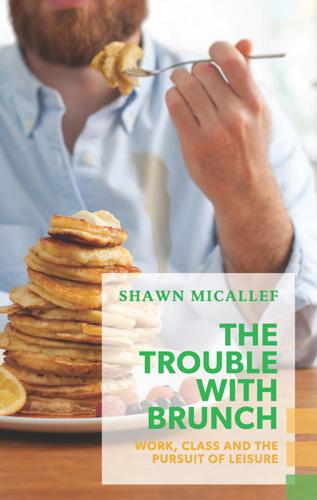
The Trouble With Brunch: Work, Class and the Pursuit of Leisure
by
Shawn Micallef
Published 10 Jun 2014
Having worked in both sectors, from the factory floor at Hiram Walker to the mall record store (and even my first Toronto job temping at a call centre), I see much in common with the relationship to work (being told what to do) and a wider class sensibility (feeling as if somebody else controls your destiny). As for lifestyle, Florida argues the creative class is not just a blending of bourgeois and bohemian values, as outlined in David Brook’s 2000 book Bobos in Paradise: The New Upper Class and How They Got There, an early look at what would inform Florida’s creative class, but transcends those two categories completely. ‘Spurred on by the creative ethos, we blend work and lifestyle to construct our identities as creative people,’ writes Florida. ‘Today, the people in my interviews identify themselves through a tangle of connections to a myriad creative activities.
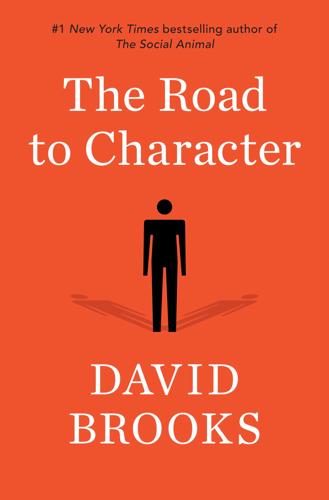
The Road to Character
by
David Brooks
Published 13 Apr 2015
By DAVID BROOKS On Paradise Drive: How We Live Now (and Always Have) in the Future Tense Bobos in Paradise: The New Upper Class and How They Got There The Social Animal: The Hidden Sources of Love, Character, and Achievement The Road to Character ABOUT THE AUTHOR DAVID BROOKS writes an op-ed column for The New York Times, teaches at Yale University, and appears regularly on PBS NewsHour, NPR’s All Things Considered, and NBC’s Meet the Press. Previously, he has been a senior editor at The Weekly Standard, a contributing editor at Newsweek and The Atlantic Monthly, and an op-ed editor at The Wall Street Journal. He is the author of Bobos in Paradise: The New Upper Class and How They Got There; On Paradise Drive: How We Live Now (And Always Have) in the Future Tense; and The Social Animal: The Hidden Sources of Love, Character, and Achievement.
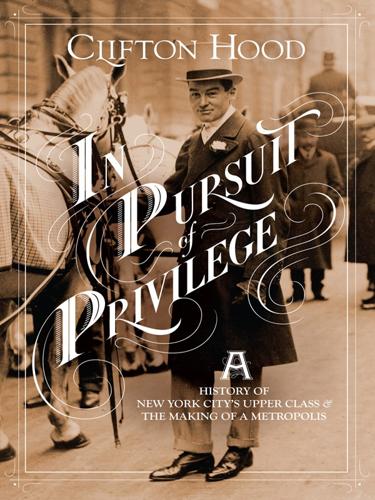
In Pursuit of Privilege: A History of New York City's Upper Class and the Making of a Metropolis
by
Clifton Hood
Published 1 Nov 2016
Kett, Merit: The History of a Founding Ideal from the American Revolution to the Twenty-First Century (Ithaca, N.Y.: Cornell University Press, 2013), 1–14. 32. In Bobos in Paradise, David Brooks portrays the formation of a new upper class of highly educated professionals who, he says, have a hybrid culture because they have “one foot in the bohemian world of creativity and another foot in the bourgeois realm of ambition and worldly success.” David Brooks, Bobos in Paradise: The New Upper Class and How They Got There (New York: Simon & Schuster, 2000), 11. Although I also employ the term “hybrid” to describe a comparable elite group, I am concerned about a different matter than Brooks is, namely, elites’ ability to move seamlessly between upper- and middle-class worlds that remain discrete and the uses to which they put that capability. 33.
…
New York Times, February 6, 1983. 131. New York Times, May 8, 1983. 132. For engagement and wedding announcements in one local paper that served a wealthy suburb, see Rye Chronicle, April 23, 1970, May 10, 1973, January 10 and May 2, 1974, January 30, June 19, and September 11, 1975. See also Brooks, Bobos in Paradise, 14 133. New York Times, June 24, 1983, June 9 and 16, 1985. Significantly, professional and business qualifications now equaled or trumped social qualifications even when it came to blue bloods. When Natalie du Pont wed Frank R. Lyon III in 1974, the New York Times communicated the illustrious lineage of the bride by describing her as the granddaughter of a former chairman of the board and president of E.I. du Pont De Nemours & Company and by reporting that the ceremony had occurred at the Long Island estate of her family.
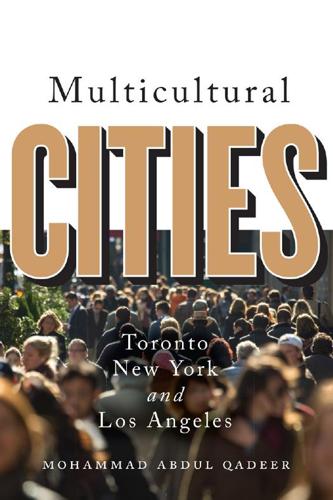
Multicultural Cities: Toronto, New York, and Los Angeles
by
Mohammed Abdul Qadeer
Published 10 Mar 2016
Ficher, “The Subcultural Theory of Urbanism: A TwentiethCentury Assessment,” American Journal of Sociology 101, no. 3 (1995), 568. Barry Wellman and Barry Leighton, “Networks, Neighborhoods, and Communities: Approaches to the Study of the Community Question,” Urban Affairs Quarterly 14, no. 3 (1979), 363–90. Kymlicka, Multicultural Odysseys, 44. David Brooks, Bobos in Paradise: The New Upper Class and How They Got There (New York: Simon and Schuster, 2001). Richard Alba and Victor Nee, Remaking the American Mainstream (Cambridge, MA: Harvard University Press, 2003), 11. Waldinger and Bozorgmehr, “The Making of a Multicultural Metropolis,” 30. Adapted from Wsevolod Isajiw, Definitions of Ethnicity, Occasional Papers in Ethnic and Immigration Studies (Toronto: Multicultural History Society of Ontario, 1979), 25.
…
Bourne, 69–74. New York: Oxford University Press.1971. Brettell, Caroline B. “Incorporating New Immigrants in a Sunbelt Suburban Metropolis.” In Twenty-First Century Gateways, edited by Susan W. Hardwick and Caroline B. Brettell,75–9. Washington: Brookings Institution Press, 2008. Brooks, David. Bobos in Paradise: The New Upper Class and How They Got There. New York: Simon and Schuster, 2001. Brooks, David. “The Death of Multiculturalism.” New York Times, 27 April 2001, http://query.nytimes.com/gst/fullpage.html?res=9C01E1DC133FF93 4A15757C0A9609C8B63. Brooks, David. “The Sidney Awards, Part 1.” New York Times, 29 December 2011. http://www.nytimes.com/2013/12/27/opinion/brooks-the-sidney -awards.html.

The View From Flyover Country: Dispatches From the Forgotten America
by
Sarah Kendzior
Published 24 Apr 2015
True merit cannot be bought—and admission should not be either. —Originally published October 29, 2013 College Is a Promise the Economy Does Not Keep In 2000, New York Times columnist David Brooks published a sociological study of the United States that now reads like science fiction. Bobos in Paradise chronicled how a new upper class of “Bobos”—bourgeois bohemians—struggled to navigate life’s dazzling options in a time of unparalleled prosperity. As presidential candidates Al Gore and George W. Bush debated how to spend the projected $5 trillion government surplus, Brooks took on the micro-crisis: How would baby boomers handle the psychic strain of making money at fulfilling jobs?
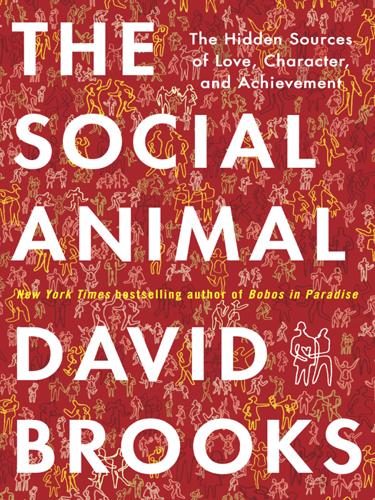
The Social Animal: The Hidden Sources of Love, Character, and Achievement
by
David Brooks
Published 8 Mar 2011
Also by David Brooks ON PARADISE DRIVE: HOW WE LIVE NOW (AND ALWAYS HAVE) IN THE FUTURE TENSE BOBOS IN PARADISE: THE NEW UPPER CLASS AND HOW THEY GOT THERE Copyright © 2011 by David Brooks All rights reserved. Published in the United States by Random House, an imprint of The Random House Publishing Group, a division of Random House, Inc., New York. RANDOM HOUSE and colophon are registered trademarks of Random House, Inc. LIBRARY OF CONGRESS CATALOGING-IN-PUBLICATION DATA Brooks, David The social animal: the hidden sources of love, character, and achievement / David Brooks. p. cm.
…
Previously, he has been a senior editor at The Weekly Standard, a contributing editor at Newsweek and The Atlantic Monthly, and an op-ed editor at The Wall Street Journal. He is currently a commentator on PBS News-Hour and contributes regularly to Meet the Press and NPR’s All Things Considered. He is the author of Bobos in Paradise: The New Upper Class and How They Got There and On Paradise Drive: How We Live Now (And Always Have) in the Future Tense. His articles have appeared in The New Yorker, The New York Times Magazine, Forbes, The Washington Post, The Times Literary Supplement, Commentary, The Public Interest, and many other magazines.

From Counterculture to Cyberculture: Stewart Brand, the Whole Earth Network, and the Rise of Digital Utopianism
by
Fred Turner
Published 31 Aug 2006
For a review of the critiques listed, see Winner, Autonomous Technology; Mumford, Myth of the Machine, 3. 61. See, e.g., Keniston, Young Radicals, 229 – 47. 62. Burner, Making Peace with the 60s, 136. 63. Galbraith, New Industrial State, 295. Galbraith also notes that in 1960 there were some 381,000 professors in America; by 1972 that number had risen to 907,000 (294). 64. Brooks, Bobos in Paradise, 26 –34. See also Baltzell, Protestant Establishment. 65. May, Homeward Bound, 13 –16; the young woman is quoted in Keniston, Young Radicals, 48. 66. Weart, Nuclear Fear, 133. 67. Quoted in Keniston, Young Radicals, 39. 68. The relationship between these two movements has been subject to extensive (and heated) investigation.
…
Digerati: Encounters with the Cyber Elite. San Francisco: HardWired, 1996. Bromell, Nicholas Knowles. Tomorrow Never Knows: Rock and Psychedelics in the 1960s. Chicago: University of Chicago Press, 2000. Bronson, Po. “George Gilder.” Wired, March 1996. ———. The Nudist on the Late Shift. New York: Random House, 1999. Brooks, David. Bobos in Paradise: The New Upper Class and How They Got There. New York: Simon and Schuster, 2000. Brown, John Seely, and Paul Duguid. The Social Life of Information. Boston: Harvard Business School Press, 2000. Bryant, John, William Aspray, Andrew Goldstein, and Frederik Nebeker. Rad Lab: Oral Histories Documenting World War II Activities at the MIT Radiation Laboratory.
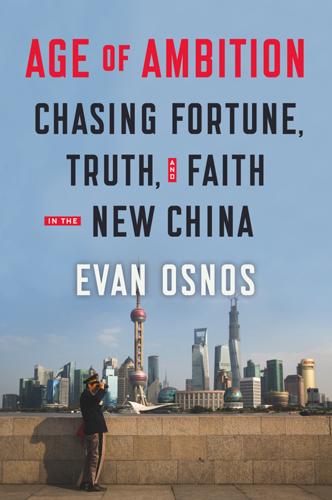
Age of Ambition: Chasing Fortune, Truth, and Faith in the New China
by
Evan Osnos
Published 12 May 2014
In Chinese, the satire fell away, and the book sold briskly as a field guide for the new world. “Just having money will not win you universal acclaim, respect, or appreciation,” the translator wrote in the introduction. “What your consumption reveals about you is the more critical issue.” David Brooks’s book Bobos in Paradise: The New Upper Class and How They Got There was translated into Chinese in 2002, and it became a best seller. It describes a distant world—one of American bourgeois bohemians, who mix sixties counterculture with Reagan-era economics—but, in China, it captured the strivers’ self-perception, and “Bobos,” or “bubozu,” became one of the year’s most-searched-for terms on the Chinese Internet.
…
Azevedo, Paulo baby formula Baidu Banco Delta Asia banks Barbie Bare-Handed Fortunes Barmé, Geremie Basic English Beautiful Destiny (Jiayuan) Becquelin, Nicholas Beijing: Ai’s protest in; foreign invasion of; house prices in; labor migration to; as poor city; sandstorms in; subway in Beijing Daily Beijing International Executive MBA program Beijing Normal University Beijing Public Security Bureau Beijing South Railway Station Belgrade Bell Tower Ben Ali, Zine El Abidine Bennett, James Gordon Berlusconi, Silvio Berman, Sarabeth Beuys, Joseph black-collar class Blackstone Group Blair, Tony bloggers blood contractors Bloomberg News Bobos Bobos in Paradise: The New Upper Class and How They Got There (Brooks) Boehner, John Bokhary, Verina Book from the Sky, A (Xu) Bouazizi, Mohammed Bo Xilai Brady, Anne-Marie brainwashing bribes; as hidden; of judges bride wealth bridge collapses Broad Union Brooks, David Buddhism Bureau of Letters and Visits Bureau of Public Opinion Bush, George W.
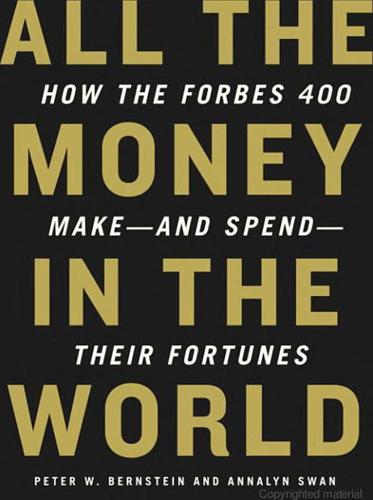
All the Money in the World
by
Peter W. Bernstein
Published 17 Dec 2008
Not for them the over-the-top spending of Larry Ellison or of Bill Koch, who built his son a two-acre playground complete with a dozen jungle gyms. Writer and New York Times columnist David Brooks christened this new affluent class—children of the 1960s who have melded capitalist success virtues with countercultural values—bourgeois bohemians, or Bobos for short. According to Brooks, in his tongue-in-cheek sociological study Bobos in Paradise: The New Upper Class and How They Got There, while these new billionaires have no problem spending their hard-earned dollars on beautiful homes and yachts, woe betide anyone who flaunts his riches egregiously. “Earlier this century86 social climbers built ornate castles, aping the manners of the European aristocracy,” Brooks writes.
…
Wynn, who suffers from a rare disease: Nick Poumgarten, “The $40-million Elbow,” The New Yorker, Oct. 23, 2006. 84. In the late 1990s: Michaels, “The Mass-Market Rich.” 85. “Theirs is not old wealth”: Dinesh D’Souza, “A Century of Wealth: The Billionaire Next Door,” Forbes, Oct. 11, 1999. 86. “Earlier this century”: David Brooks, Bobos in Paradise: The New Upper Class and How They Got There (New York: Simon & Schuster, 2001), p. 47. 10. Heirs Sources interviewed for this chapter: Nelson W. Aldrich Jr., author, Old Money: The Mythology of Wealth in America (1988); Natalie A. Black; Peter Buffett; Susie Buffett; Sara Hamilton of Family Office Exchange; Dr.
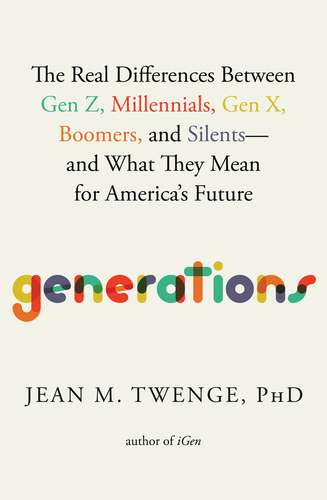
Generations: The Real Differences Between Gen Z, Millennials, Gen X, Boomers, and Silents—and What They Mean for America's Future
by
Jean M. Twenge
Published 25 Apr 2023
When they were building careers and families in the 1980s and 1990s, the country favored stability and stoking the economy. By the 2000s, well-off Boomers in their 50s and 60s were melding hippie instincts with yuppie ones, finding moral meaning in what they consumed. As David Brooks (b. 1961) put it in his 2001 book, Bobos in Paradise, food became “a barometer of virtue” as Boomers “selectively updated” hippie values: “Gone are the sixties-era things that were fun and of interest to teenagers, like Free Love, and retained are all the things that might be of interest to middle-aged hypochondriacs, like whole grains.” Of the last five U.S. presidents, four have been Boomers (all except Biden), with three (Clinton, George W.
…
Nelson, 48 Bambino, Denny, 140 Bartlett, Christopher, 474 Baumeister, Roy, 369 Bennet, James, 218 Bernstein, Samuel Rae, 349 Biden, Joe, 34, 59, 76, 117, 222, 432, 383, 384, 485, 494 Biles, Simone, 392 Blackburn, Marsha, 495 Blackney, Amelia, 353–54 Black Americans, 346 birth rates of, 283, 283 Black Lives Matter movement, 13, 304, 315, 318, 324, 324, 388, 442, 451–52, 474, 499 in Boomer era, 102–8 civil rights movement and, 13, 33, 35, 38–42, 56, 78, 102, 120, 149 college and, 57, 57, 106, 258 discrimination against, 204–8, 315–24, 316, 317, 320, 321, 322, 388–92, 432, 488, 489 and future of racial issues, 498–502 happiness of, 107–8, 107, 142–43 high school and, 56, 57, 57, 104–5 homicides and, 187–88, 188 income of, 106, 107, 270–71 interracial marriage and, 40, 41, 42 Millennial, 270–71, 298 political leadership by, 102–3, 104, 107 poverty among, 105–6, 105 racism against, and free speech rights, 381, 382, 382, 383 religion and, 298, 299 segregation and, 5, 35, 39, 103–4, 107, 500–501 voter registration by, 102, 103, 107 white liberals’ warmth toward, 322–23, 323 birth control, 79, 92, 231, 286, 480 birth rates, 53, 53, 75, 76, 91–94, 92, 93, 96, 169, 282, 283, 284, 378, 476, 507, 510 declining, implications of, 481–84 Gen Z, 377–78, 477–81 Millennial, 281–84, 286–88, 476–77 strategies for increasing, 483–84 blame, 29–30 Bliefnick, Soren, 311 Blume, Judy, 161 Blumenthal, Richard, 459, 495 Bobos in Paradise (Brooks), 76 Boesky, Ivan, 180 Bolton, Frances, 109 Boomers, 2, 75–147 Black, 102–8 criticism of, 79–80 drugs and, 79, 96–102, 136 family and, 91–96, 112 famous, 81–83 income inequality and, 138–45 individualism and, 78–80, 83–90, 96, 136–37, 237, 240 in leadership roles, 226–27 marriage and, 52, 55, 94, 96 mental distress and depression in, 127–38, 144, 145, 193–95, 328–29 New Age interests of, 84–85 “OK, Boomer” insult and, 3, 23, 29, 80, 260, 311–12, 515 politics and, 119–27, 140, 223–24 popular first names of, 81 population in 2021, 81 sex before marriage and, 89–91 sexual harassment and, 117–19 technology and, 79 women’s equality and, 108–17 Bors, Matt, 248 Boyz in the Hood, 189 Brewster, Todd, 73 Brookings Institution, 477 Brooks, David, 76 Brothers, Sam, 180 Brown, Michael, 315, 389, 500 Brown, Rusty, 46 Bruce, Lenny, 379 Bush, Barbara, 45, 115 Bush, George H.
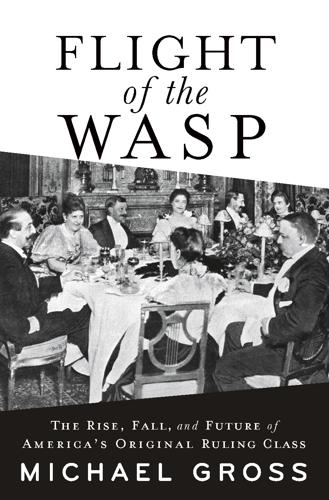
Flight of the WASP
by
Michael Gross
Alsop with Adam Platt, “I’ve Seen the Best of It”: Memoirs (New York: Norton, 1992), 17–33. 10 Richard Brookhiser, The Way of the WASP (New York: Free Press, 1991), 123. 11 Christopher Lehmann-Haupt, “The Decline of a Class and a Country’s Fortunes,” New York Times, January 17, 1991. 12 David Brooks, Bobos in Paradise (New York: Simon & Schuster, 2000), 20, 40. 13 Ben Schreckinger, “The Death of the WASP,” Politico, April 1, 2014. 14 Rich Lowry, “A Farewell to the WASPs,” National Review, April 24, 2018. 15 Alsop, “I’ve Seen the Best of It,” 33–38. 16 Frederic Cople Jaher, The Rich, the Wellborn, and the Powerful: Elites and Upper Classes in History (Urbana: University of Illinois Press, 1973), 258 17 Baltzell, The Protestant Establishment, 72. 18 E.
…
The Money Men: Capitalism, Democracy and the Hundred Years’ War over the American Dollar. New York: Norton, 2006. Brookhiser, Richard. Gentleman Revolutionary: Gouverneur Morris, the Rake Who Wrote the Constitution. New York: Free Press, 2003. Brookhiser, Richard. The Way of the WASP. New York: Free Press, 1991. Brooks, David. Bobos in Paradise. New York: Simon & Schuster, 2000. Burt, Nathaniel. First Families. Boston: Little, Brown, 1970. Burt, Nathaniel. The Perennial Philadelphians: The Anatomy of an American Aristocracy. Philadelphia: University of Pennsylvania Press, 1963. Chernow, Ron. Alexander Hamilton. New York: Penguin, 2004.
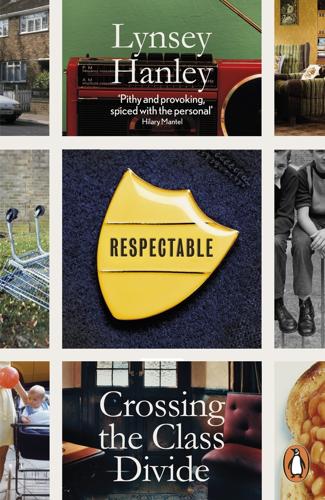
Respectable: The Experience of Class
by
Lynsey Hanley
Published 20 Apr 2016
Whitley, J., ‘If Billy Elliot had been a painter …’, Daily Telegraph, 10 September 2007 20. Bennett, T. et al, ‘Cultural Capital and the Cultural Field in Contemporary Britain’, CRESC Working Paper no. 3, published by Centre for Research on Socio-Cultural Change, University of Manchester, June 2005 21. Brooks, D., BOBOs in Paradise: The New Upper Class and How They Got There (Simon & Schuster, 2000) 22. Savage, M., Devine, F. et al, ‘The Great British Class Survey – Results’, BBC Science, 3 April 2013; http://www.bbc.co.uk/science/0/21970879, accessed 8 August 2014 23. http://www.tuc.org.uk/economic-issues/touchstone-pamphlets/everyone-thinks-they-live-middle-britain, accessed 20 May 2014 24.
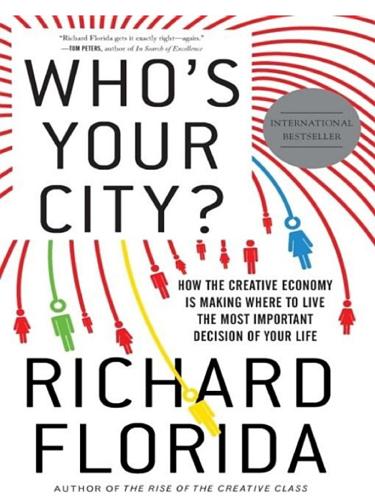
Who's Your City?: How the Creative Economy Is Making Where to Live the Most Important Decision of Your Life
by
Richard Florida
Published 28 Jun 2009
Chapter 6 1 “The World Goes to Town,” The Economist, May 3, 2007. 2 Alfonso Hernandez Marin, “Cultural Changes: From the Rural World to Urban Environment,” United Nations Chronicle, November 4, 2006. 3 Kenneth Jackson, Crabgrass Frontier, Oxford University Press, 1987; Robert Bruegmann, Sprawl: A Compact History, University of Chicago Press, 2005. 4 Joel Garreau, Edge City, Anchor, 1992. 5 Alan Ehrenhalt, “Trading Places: The Demographic Inversion of the American City,” The New Republic, August 13, 2008. 6 David Brooks, Bobos in Paradise, Simon & Schuster, 2001; Brooks, On Paradise Drive, Simon & Schuster, 2004. 7 Edward Glaeser and Christopher Berry, The Divergence of Human Capital Levels Across Cities, Harvard Institute of Economic Research, August 2005. 8 Richard Florida, “Where the Brains Are,” Atlantic Monthly, October 2006, p. 34. 9 Joseph Gyourko, Christopher Mayer, and Todd Sinai, “Superstar Cities,” National Bureau of Economic Research, Working Paper no. 12355, July 2006.

On Paradise Drive: How We Live Now (And Always Have) in the Future Tense
by
David Brooks
Published 2 Jun 2004
Also by David Brooks Bobos in Paradise: The New Upper Class and How They Got There SIMON & SCHUSTER Rockefeller Center 1230 Avenue of the Americas New York, NY 10020 Copyright © 2004 by David Brooks All rights reserved, including the right of reproduction in whole or in part in any form. SIMON & SCHUSTER and colophon are registered trademarks of Simon & Schuster, Inc. Designed by Paul Dippolito Library of Congress Cataloging-in-Publication Data Brooks, David On paradise drive: how we live now (and always have) in the future tense / David Brooks. p. cm. Includes bibliographical references and index. 1.
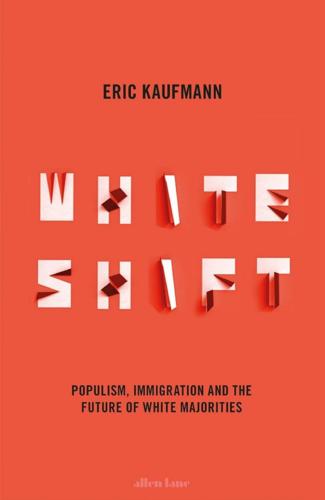
Whiteshift: Populism, Immigration and the Future of White Majorities
by
Eric Kaufmann
Published 24 Oct 2018
One index of rising bohemianism was the explosion in the number of artists in New York, from a few thousand in the 1960s to 100,000 by the early 1970s.28 Meanwhile, the share of single households in Manhattan had surged to a third of the city’s population by 1980. In the 1980s, upwardly mobile professionals, or ‘yuppies’, came to adopt aspects of bohemianism, combining economic self-interest with social liberalism. This is nicely explored by David Brooks’s sardonic social commentary on the bohemian affectations of the American bourgeoisie, Bobos in Paradise (2013). One ‘bobo’ hotbed was the emerging tech hub of Silicon Valley, where countercultural values fused with venture capitalism and big science to form a new social ecosystem. Techies, hippies, hipsters and yuppies represent different facets of the fragmentation of identity among young, well-educated modernist whites.
…
Bell, The Winding Passage: Essays and Sociological Journeys, 1960–1980, Cambridge, Mass., 1980: ABT Books, pp. 275–6. 23. A. Giddens, Modernity and Self-Identity, Cambridge, 1991: Polity Press. 24. E. Doss, Benton, Pollock and the Politics of Modernism: From Regionalism to Abstract Expressionism, Chicago and London, 1991: University of Chicago Press. 25. D. Brooks, Bobos in Paradise: The New Upper Class and How They Got There, New York, 2001: Simon & Schuster. 26. D. Bell, The Cultural Contradictions of Capitalism, New York, 1976: HarperCollins, p. 111. 27. Marie-Danielle Smith, ‘Governor general apologizes for calling indigenous people “immigrant” after interview backlash’, National Post, 19 June 2017. 28.

Twilight of the Elites: America After Meritocracy
by
Chris Hayes
Published 11 Jun 2012
False Profits: Recovering from the Bubble Economy. Sausalito, Calif.: PoliPointPress, 2010. Baltzell, E. Digby. The Protestant Establishment: Aristocracy & Caste in America. 1964. Reprint, New Haven, Conn.: Yale University Press, 1987. Bottomore, Tom. Elites and Society. 2nd ed. London and New York: Routledge, 1993. Brooks, David. Bobos in Paradise: The New Upper Class and How They Got There. New York: Simon & Schuster, 2000. Canseco, José. Juiced: Wild Times, Rampant ’Roids, Smash Hits, and How Baseball Got Big. New York: HarperCollins, 2005. Doyle, Thomas P. Sex, Priests, and Secret Codes: The Catholic Church’s 2000-Year Paper Trail of Sexual Abuse.
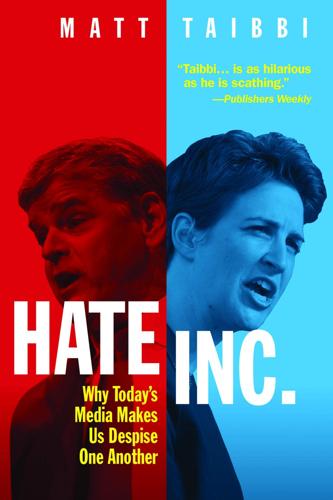
Hate Inc.: Why Today’s Media Makes Us Despise One Another
by
Matt Taibbi
Published 7 Oct 2019
“He’s effective not because he sounds like a historian, but because he sounds like an advertisement. Friedman has no ideas that can’t be expressed in a catchphrase,” author David Plotz wrote, in a piece that was genuinely intended to be complimentary. Brooks meanwhile wrote an entire book called Bobos in Paradise about how rich New Yorkers had achieved the apex of consumer taste. This was like Francis Fukuyama’s The End of History, except the Brooks version was The End of the History of Buying Tasteful Furniture. Lineups full of themes like this are designed to make sure that readers—particularly upper-class readers—are never surprised or offended when they click on an op-ed page.
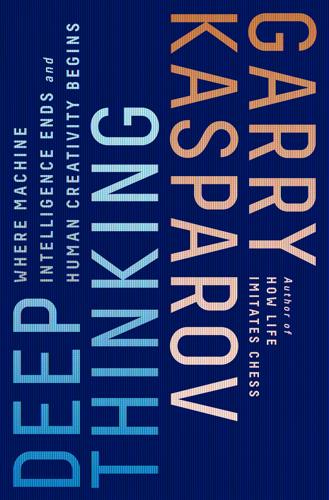
Deep Thinking: Where Machine Intelligence Ends and Human Creativity Begins
by
Garry Kasparov
Published 1 May 2017
Clive Thompson, “Your Outboard Brain Knows All,” Wired, September 25, 2007. “It’s merely my autonomy that I’m losing.” David Brooks, “The Outsourced Brain,” New York Times, October 26, 2007. His tone is derisive here, or at least resigned, although Brooks has in the past been an accurate chronicler of American cultural foibles. His book Bobos in Paradise describes the search for fake authenticity by the entitled, and a similar attitude decries the new technology we need for supplanting an obsolete analog past. “Does an overreliance on machine memory shut down other important ways.” Thompson, “Your Outboard Brain Knows All.” more wins and losses than draws.
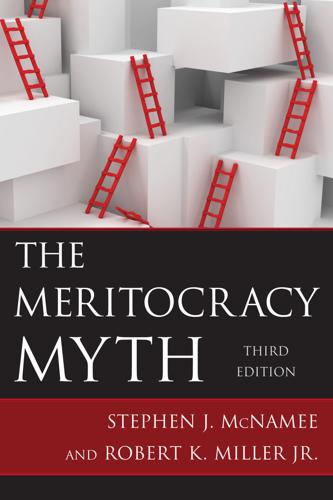
The Meritocracy Myth
by
Stephen J. McNamee
Published 17 Jul 2013
New Brunswick, NJ: Transaction. Blakely, Edward J., and Mary Gail Snyder. 1997. Fortress America: Gated Communities in the United States. Washington, DC: Brookings Institute Press. Broad, David. 1996. “The Social Register: Directory of America’s Upper Class.” Sociological Spectrum 16:173–81. Brooks, David. 2000. Bobos in Paradise: The New Upper Class and How They Got There. New York: Simon & Schuster. Brulle, Robert J., and David N. Pellow. 2006. “Environmental Justice: Human Health and Environmental Inequalities.” Annual Review of Public Health 27:102–24. Budrys, Grace. 2010. Unequal Health: How Inequality Contributes to Health or Illness. 2nd ed.
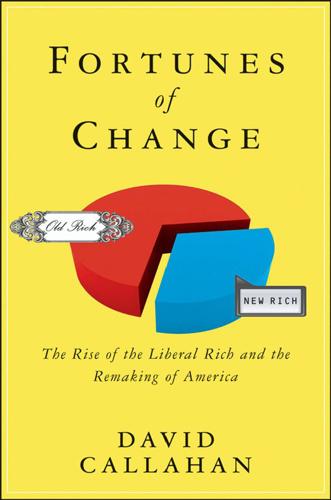
Fortunes of Change: The Rise of the Liberal Rich and the Remaking of America
by
David Callahan
Published 9 Aug 2010
Back in the era of the “organization man,” traits such as creativity and initiative were often less valued than conformity. Success in the knowledge economy, in contrast, often comes by challenging existing systems, thinking outside the box, and taking risks. Here, bourgeois and bohemian values have seamlessly fused—a trend seen elsewhere, too, as David Brooks argued in Bobos in Paradise. Entrepreneurs who strike out on their own to “monetize ideas” are heavily represented among the new rich, while certain major knowledgeeconomy companies are set up to accommodate creative individuals. Google, for instance, has a “20 percent rule,” which allows its engineers to devote a fifth of their time to whatever they are passionate about.

Uneasy Street: The Anxieties of Affluence
by
Rachel Sherman
Published 21 Aug 2017
Brookings Papers on Economics Activity (Spring): 261–312. Available at https://www.jstor.org/stable/43869025?seq=1#page_scan_tab_contents. Brines, Julie. 1994. “Economic Dependency, Gender, and the Division of Labor at Home.” American Journal of Sociology 100: 652–688. Brooks, David. 2000. Bobos in Paradise: The New Upper Class and How They Got There. New York: Simon & Schuster. Brown, Phillip, Sally Power, Gerbrand Tholen, and Annabelle Allouch. 2016. “Credentials, Talent and Cultural Capital: A Comparative Study of Educational Elites in England and France.” British Journal of Sociology of Education 37 (2): 191–211.
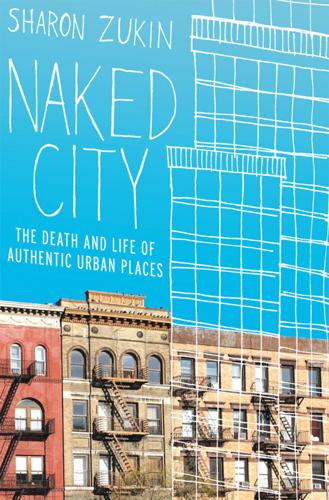
Naked City: The Death and Life of Authentic Urban Places
by
Sharon Zukin
Published 1 Dec 2009
Knut Tarnowski and Frederic Will (London: Routledge, 2003). 27. Jerrold Seigel, Bohemian Paris (New York: Viking, 1986); Robert Darnton, “Finding a Lost Prince of Bohemia,” New York Review of Books, April 3, 2008, pp. 44–48. 28. Thorstein Veblen, The Theory of the Leisure Class (1899; New York: Oxford University Press, 2008); David Brooks, Bobos in Paradise (New York: Simon and Schuster, 2000), p. 83, emphasis added. Also see David Ley, “Artists, Aestheticization and the Field of Gentrification,” Urban Studies 40 (2003): 2527–44; Mike Featherstone, “The Aestheticization of Everyday Life,” in Consumer Culture and Postmodernism (London: Sage, 1991), pp. 65–82. 29.

Masters of Management: How the Business Gurus and Their Ideas Have Changed the World—for Better and for Worse
by
Adrian Wooldridge
Published 29 Nov 2011
David Vogel, The Market for Virtue (Washington, DC: Brookings Institution, 2006), p. 135. 14. Darrell Rigby and Barbara Bilinear, Management Tools and Trends, (Bain & Company, 2009). 15. John Browne, Beyond Business (London, Weidenfeld & Nicolson, 2010), pp. 194–96. 16. Ed Crooks, “Man in the News: Tony Hayward,” Financial Times, April 30, 2010. 17. David Brooks, Bobos in Paradise: The New Upper Class and How They Got There (New York: Simon & Schuster, 2000). 18. Daniel Isenberg, “Keggfarms (India): Which came first, the Kuroiler or the KEGG,” Harvard Business School Case Study. 19. Daniel Isenberg, “Lapdesk company: A South African FOPSE,” Harvard Business School case study. 20.
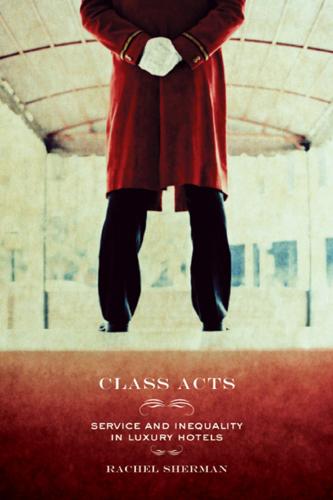
Class Acts: Service and Inequality in Luxury Hotels
by
Rachel Sherman
Published 18 Dec 2006
Bowen, John, and Stowe Shoemaker. 1998. “Loyalty: A Strategic Commitment.” Cornell Hotel and Restaurant Administration Quarterly 39 (February): 12–25. Braverman, Harry. 1974. Labor and Monopoly Capital: The Degradation of Work in the Twentieth Century. New York: Monthly Review Press. Brooks, David. 2000. Bobos in Paradise. New York: Simon and Schuster. UC_Sherman (O).qxd 10/3/2006 2:01 PM Page 327 References 327 Burawoy, Michael. 1979. Manufacturing Consent. Chicago: University of Chicago Press. ———. 1985. The Politics of Production. London: Verso. Butler, Suellen, and James K. Skipper. 1980. “Waitressing, Vulnerability, and Job Autonomy: The Case of the Risky Tip.”

The Rise and Fall of the Neoliberal Order: America and the World in the Free Market Era
by
Gary Gerstle
Published 14 Oct 2022
On the deployment of the broken windows theory by then New York City police commissioner William Bratton, see William Bratton and Peter Knobler, Turnaround: How America’s Top Cop Reversed the Crime Epidemic (New York: Random House, 1998). 104.For an early and influential (and mocking) portrait of Yuppies, see David Brooks, Bobos in Paradise: The New Upper Class and How They Got There (New York: Simon and Schuster, 2000). 105.For a sampling of these attacks on Bill and Hillary Clinton, see David Brock, The Seduction of Hillary Rodham (New York: Free Press, 1996). Brock later recanted his own attacks and turned his partisan fury on his former GOP allies.

The Better Angels of Our Nature: Why Violence Has Declined
by
Steven Pinker
Published 24 Sep 2012
They could adopt poses, try on styles, and immerse themselves in seedy cultural genres without taking any of them too seriously. (In this regard they were more sophisticated than the boomers in their youth, who treated the drivel of rock musicians as serious political philosophy.) Today this discernment is exercised by much of Western society. In his 2000 book Bobos in Paradise, the journalist David Brooks observed that many members of the middle class have become “bourgeois bohemians” who affect the look of people at the fringes of society while living a thoroughly conventional lifestyle. Cas Wouters, inspired by conversations with Elias late in his life, suggests that we are living through a new phase in the Civilizing Process.